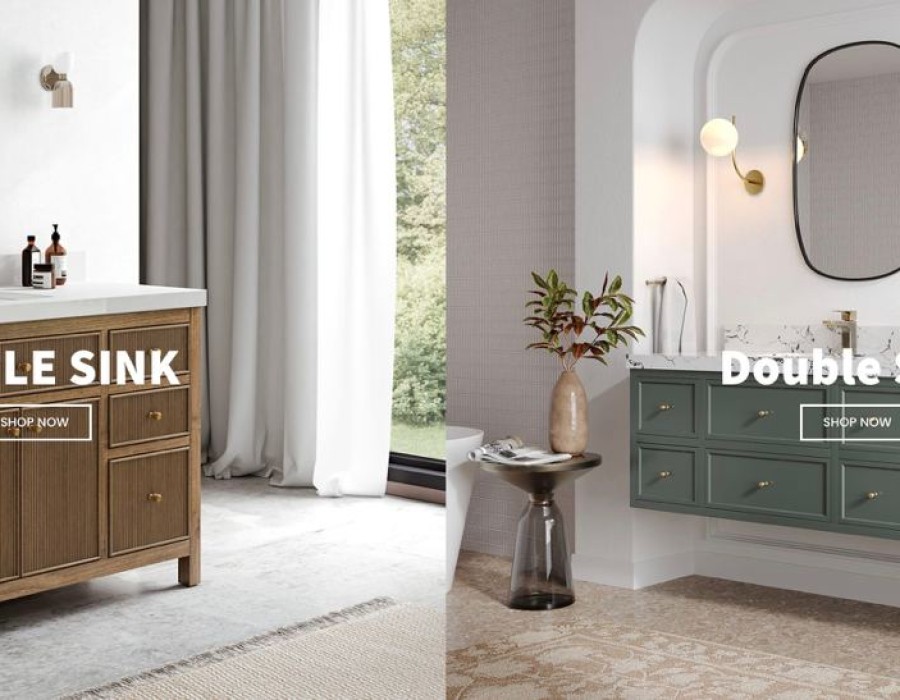Creating furniture that stands up to everyday use without giving in to wear is as much about the right joinery as it is about the material. Dovetail joints have been a cornerstone of woodworking for generations—and with good reason. They’re solid, reliable, and beautiful in their simplicity. But when paired with modern techniques like pocket hole screws, they can offer even more stability, especially in high-use areas like bathrooms or kitchens.
This approach doesn’t mean cutting corners. It means building smarter. The goal is to make something that doesn’t just look good for a few years but holds up for decades. Let’s break down how dovetail joints work, how pocket hole screws come into play, and when this combination makes real sense.
Why Dovetail Joints Have Never Gone Out of Style
Walk into any well-made cabinet or drawer, and chances are you’ll spot a dovetail joint. These interlocking “fingers” are cut at angles that lock together without needing metal fasteners. The design resists pulling forces—perfect for drawers that are opened and closed thousands of times.
More than just functional, dovetails also add character. They show that care went into the piece, that someone took time to craft each connection. That detail is something you feel every time you use it.
But they’re not without limitations. Even perfectly cut dovetails depend on precise fits and strong glue bonds. Add moisture, temperature swings, or constant movement, and you’re putting that joint to the test.
Pocket Hole Screws: Quick Fix or Smart Reinforcement?
Pocket hole screws often get a bad name. In mass production, they’ve been used to slap furniture together fast. But when used properly—in the right places—they can do a lot of good.
The method involves drilling an angled hole into one board and joining it to another using a special screw. It’s fast, sure. But more importantly, it pulls the two pieces together tightly, making the joint less likely to shift or loosen over time.
So why add screws to dovetail joints? Not for the look—but for the peace of mind. When used to reinforce areas that will take more stress, pocket screws can help prevent the slight loosening that comes from years of use and movement. In a humid bathroom or under the weight of a stone countertop, every bit of reinforcement helps.
Marrying the Two: Where It Works Best
There’s no need to hide a dovetail joint. In fact, they’re often left visible on drawer sides or vanity frames because they’re attractive in their own right. But inside, where you don’t see them, adding a pocket screw can increase the life of the joint—without compromising the design.
This technique works especially well in bathroom furniture. Take, for example, a solid wood vanity. It might be made from walnut, oak, or teak—materials that can handle moisture, but still expand and contract slightly over time. Combining dovetail joinery with a hidden pocket screw gives that added edge: the charm of handcrafted woodworking with the durability of a more secure hold.
The result is subtle. You won’t see the screws. You won’t feel a difference. But years from now, when everything is still tight and in place, you’ll understand why it mattered.
Practical Tips for Woodworkers and Buyers Alike
If you're building furniture:
- Choose screws wisely. Use coarse-threaded screws for softwoods and fine-threaded for hardwoods. Go with stainless steel if there's any chance of moisture exposure.
- Don’t rely on screws alone. Think of them as backup—not the primary means of holding things together.
- Keep the placement discreet. Screws should sit away from visible areas and never weaken the integrity of the dovetail cut.
If you’re buying furniture:
- Ask how it's made. Not every piece that looks like dovetail is built with care. Some are faked with overlays or minimal cuts.
- Look at the finish inside and out. A real dovetail joint will be smooth, with no filler or glue overflow.
- Weight tells a story. Heavy, well-built pieces tend to be made from solid wood and durable joinery—not staples or fasteners that loosen in a year.
Conclusion: Real Craftsmanship Isn’t One-Size-Fits-All
In the world of furniture, no single technique works everywhere. What matters is knowing when to use which method—and how to combine them without sacrificing quality. Dovetail joints offer proven strength and timeless looks. Pocket screws, when used with care, can extend the life of that strength.
Together, they bring out the best in both worlds: the elegance of tradition and the quiet support of modern technique. Whether you're building from scratch or investing in long-lasting pieces, keep this in mind—how something is held together often matters more than how it looks at first glance. And when it’s done right, you won’t just see the difference. You’ll feel it—every time you open that drawer or lean on that counter.






Comments